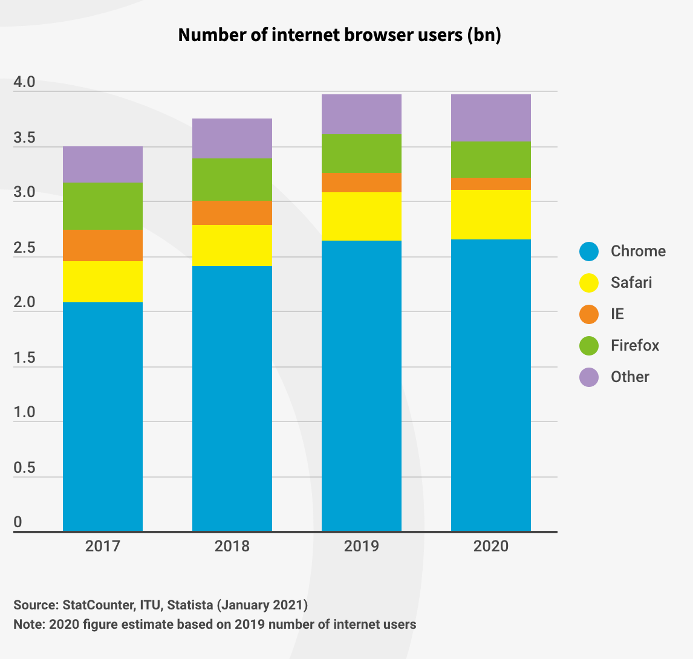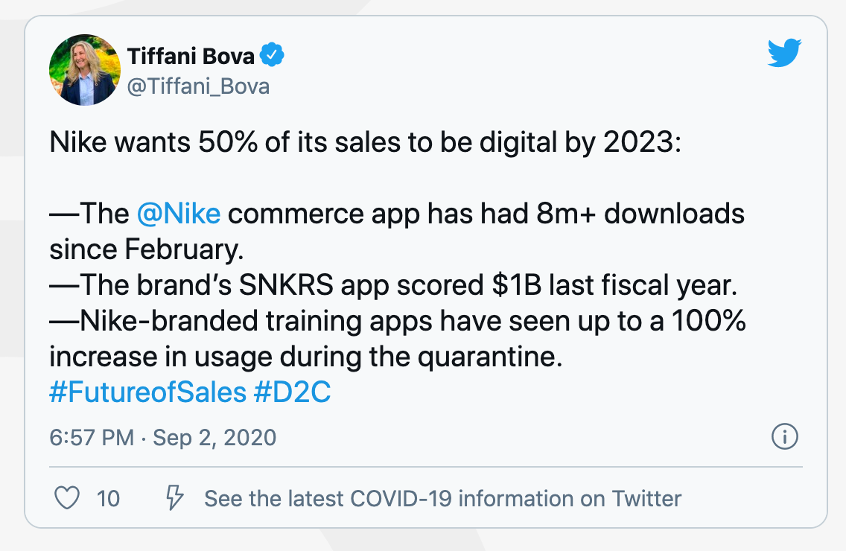
Sport needs to adapt as the (third-party) cookie crumbles
How sports properties can put themselves in pole position to understand their audiences
Google has had a transformational impact on the world, changing the way humankind interacts and gathers information. In six months’ time1, with the roll out of its Privacy Sandbox, it’ll have another transformational impact – this time on the $650 billion advertising industry.
Sports properties should follow these developments closely and identify how they can adapt their business.
The aim of the Privacy Sandbox is to establish a new framework for digital advertising, and replace most use cases for third-party cookies which, for decades, have been used to build detailed records of behaviours and interests from our internet activities. Through this, marketers have been able to deliver, and measure the impact of, personalised advertising across the web.
Apple limited cookie tracking on Safari, the second biggest browser behind Chrome (Google), in 2017, while Mozilla’s Firefox stopped third-party cookies by default in 2019. Then in April 2021, with the release of iOS 14.5, Apple introduced App Tracking Transparency (ATT). The new privacy feature that pops up, requiring apps to ask users whether they want the app to track their behaviour for advertising purposes. Initial data suggests only 15% of iOS 14.5 users are allowing tracking across apps.
But Chrome is used as the primary web browser by 2.65 billion internet users (see below), and through the Privacy Sandbox – which is yet to be fully defined – Google will effectively make third-party cookies obsolete.
Number of internet browser users (bn)

Source: StatCounter, ITU, Statista (January 2021) Note: 2020 figure estimate based on 2019 number of internet users
Both short-term and long-term that means there are important decisions to be made across sport. In the short-term, properties running paid media campaigns on third-party platforms like Facebook and Google Ads – for products such as retail, streaming subscriptions, and tickets – will find they will have to adjust their strategies to acquire new customers.
Long-term, we think the marketing landscape that develops will be positive for sport, and the brands and media platforms that invest in it. We have long-standing, direct relationships with fans, who will be the currency that defines the next era of sports marketing.
Sports properties are super-charged, premium publishers. They are able to create at scale, engaged audiences within brand-safe digital environments. And with the right tech and new approaches to build direct relationships with their audiences, sports properties can position themselves in pole position – way ahead of publishers – in terms of understanding their audiences through the compliant and transparent collection of zero and first-party data.
We’re proud of and inspired by the forward-thinking properties which, anticipating a crackdown on third-party cookies, have already been investing significantly in this – in addition to second-party data.
Nike – which as a business has sold products almost entirely via retailers over the course of its history – has been on this journey recently. Through a portfolio of digital platforms that includes SNKRS (providing inside access to product launches and events), Nike Run Club, and the Nike Training Club, it has been able to create a zero and first-party, data-rich, digital ecosystem where it can monitor interactions, transactions and demographic information around its audience in a way that complies with privacy regulations.

Clearly Nike still needs, and will continue to need, an active presence on the media platforms that audiences use day to day. It is therefore still a heavy user of third-party data and will continue to be active in the Google Privacy Sandbox era. The same is true of all businesses looking to build out D2C businesses.
But sports properties are in a brilliant position to follow in Nike’s footsteps because they have large, engaged audiences, and with the right tech and strategy, can easily collect first and zero-party data on them through ticket purchasing, retail, user-generated content, membership programmes, and media consumption.
Sponsorship’s new era
It’s in the sponsorship space we believe the biggest changes will be felt, as brands and media agencies are currently re-assessing where they place their marketing budgets in an increasingly third-party cookie-less world where audiences are harder to target one-to-one.
Sport is unrivalled as a marketing platform at reaching audiences in real-time, at scale – which means it is brilliant at bringing in top-of-the-funnel audiences. Doing this on their own digital platforms through which direct relationships have been established, audiences can be nurtured and converted through the funnel with marketing delivered through those same digital channels, or on a brand partner’s ecosystem through second-party data.
We recently helped a client create a partnership for a major brand in the travel sector using second-party data. The brand was able to match its own audience with the property’s audience and target them accordingly in both ecosystems with personalised and contextual messages based on their demographics, behaviours and user journey. No third-party cookies were required, and it was all done with user consent.
This is a new type of approach within the sports sponsorship model, and one we think will be increasingly common as brands look to impact audiences digitally – in addition to other marketing channels, such as billboard advertising or logo exposure on shirts.
|
published on
12 August 2021
Category
More in Communications

Media in India: the future is now
Brands pursuing the Indian market must focus on personalised experiences and data-driven strategies

Mechanisms that Matter – Google
Deconstructing the future of media agency models

Multinational companies must have an India strategy
The Indian market is hugely attractive to brands, but multinational companies must have a bespoke India strategy

